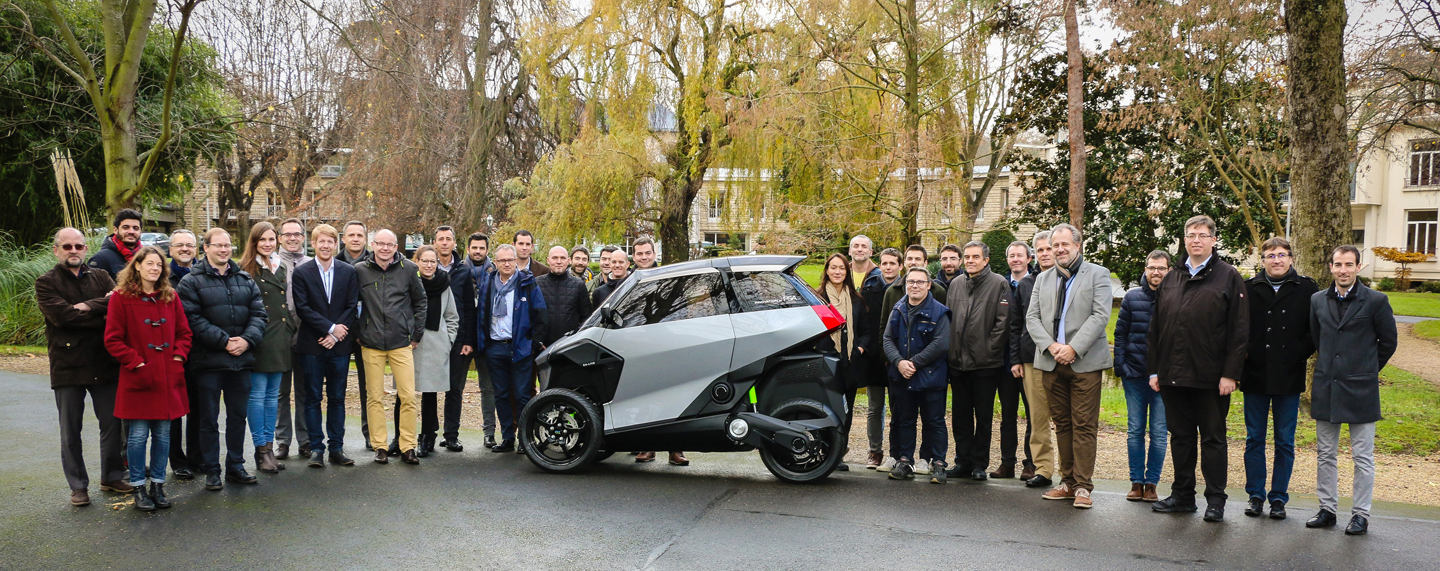PSA develops electrified light vehicle for EU urban mobility project
The PSA Group has developed an electrified light vehicle (L5e) as part of the EU-LIVE project and a new L5e-category electrified mobility solution. The L5e denomination refers to the three-wheeled vehicles one can use at a speed above 50kph and on any road.
 The ‘Efficient Urban LIght Vehicle’ (EU-LIVE) European consortium brings together 12 partners from six countries, with Groupe PSA being the sole carmaker. Based on an architecture similar to a tricycle, the electrified light vehicle is adapted for urban and peri-urban trips with a zero-emission mode for city driving.
The ‘Efficient Urban LIght Vehicle’ (EU-LIVE) European consortium brings together 12 partners from six countries, with Groupe PSA being the sole carmaker. Based on an architecture similar to a tricycle, the electrified light vehicle is adapted for urban and peri-urban trips with a zero-emission mode for city driving.
 The hybrid vehicle, which is permitted on all roads with a maximum speed of 130kph, runs in zero emission mode up to 70kph, after which it switches to a petrol motor. Its modular in-wheel powertrain can be used on a variety of L-category vehicles, one of the main focuses of the EU-LIVE project. Positioned between the two-wheel and four-wheel segments, it is equipped with a plug-in hybrid electric vehicle (PHEV) powertrain, two electric in-wheel motors and a petrol internal combustion engine.
The hybrid vehicle, which is permitted on all roads with a maximum speed of 130kph, runs in zero emission mode up to 70kph, after which it switches to a petrol motor. Its modular in-wheel powertrain can be used on a variety of L-category vehicles, one of the main focuses of the EU-LIVE project. Positioned between the two-wheel and four-wheel segments, it is equipped with a plug-in hybrid electric vehicle (PHEV) powertrain, two electric in-wheel motors and a petrol internal combustion engine.
 According to PSA, due to its silhouette and hybrid technology, the new EU-LIVE electrified mobility solution can be used on all roads and offers drivers a wide array of benefits:
According to PSA, due to its silhouette and hybrid technology, the new EU-LIVE electrified mobility solution can be used on all roads and offers drivers a wide array of benefits:
- Suited to both roads and motorways, all it requires is a driving licence.
- Its tilting mechanism offers superior handling, making the vehicle as easy to drive as a three-wheel scooter. This and the roll-control technology account for more than half of the 13 patents filed by Groupe PSA. The system notably makes use of hydraulic components and hydropneumatic suspension.
- The vehicle runs in zero-emission mode at speed of up to 70kph using two rear electric in-wheel motors, developed by 2 consortium partners Elaphe and Brembo.
- The 48-volt electric battery – designed by Samsung SDI – can be recharged using regenerative braking technology. When driving on inter-urban roads at speeds of between 70 and 130kph, the Peugeot scooter 31-kilowatt single-cylinder petrol engine takes over the propulsion. The light vehicle has a total range of 300 kilometres and a top speed of 130 kilometres per hour.
- The vehicle’s small footprint (2.4 metres x 0.85 metres) and rotating doors facilitate perpendicular parking and free up road space. As well as an enclosed, heated cabin, the vehicle also features seat belts and an airbag, making helmets, gloves, waterproof jackets and other protective gear unnecessary.
One of the EU-LIVE consortium’s main aims is to develop common powertrains that can be used for a variety of L-category vehicles in order to achieve economies of scale.

This urban mobility project is funded by the European Commission (6.7 million euros) under the ‘Horizon 2020 GV5’ research and innovation programme.
For more information, visit: http://eu-live.eu
